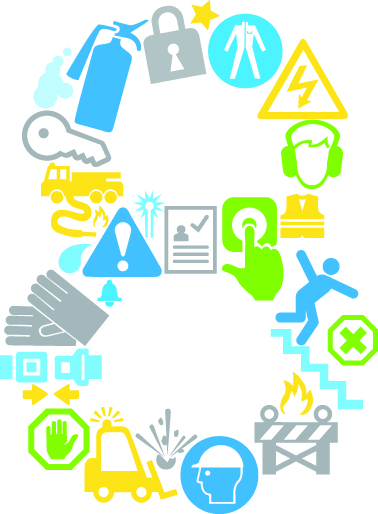
Do you want to know more about Stora Enso?
On this page you find all information related to safety which is important for you to know and be aware about. Please always follow our safety instructions.

The employee shall be removed from the worksite either permanently or for a temporary period if safety regulations are not followed.
Moving in mill area always need´s valid license.
Photographing is allowed only with a permission from company’s representative.
Smoking is allowed only in assigned smoking areas.
Appearing intoxicated, using alcohol or other intoxicants and bringing them onto mill area are all prohibited. Anyone who’s suspected of being under the in- fluence of alcohol or any other in- toxicant will be removed from the mill area immediately.
If there are grounds for suspicion, persons and vehicles can be inspected before leaving the mill area in order to prevent un- authorized removal of company property.
If a person is determined broken the rules or guidelines contained in this safety guide or otherwise given to ensure safety, Enocell
has the right to prohibit that person from working in the mill area.
To be allowed to work in the mill area, you must have completed:
You can complete Stora Enso's general safety induction and Uimaharju Mills' local safety induction in the following address:
http://elearning.fi/storaenso/turvainfo/
Password for all inductions: sesafety
The general induction takes around an hour to complete. The local and shutdown inductions take around 20 min and it must be completed in one go for it to be saved.
When working at construction or shutdown...
Always, when working at the mill site wear:
The contractor brings the required personal protective equipment and hydroxine sulphite sensors to the worksite
Protective clothing must be selected according .
When using a personnel lifting device, fall protection must be worn and a safety rope must be attached in order to prevent falling.
At waste water treatment area single-use FFP3 class respirator mask and protective cloves are required.
Escape respirator kit must be carried with while working in cooking department.
NB! For working in the cooking department area, the work team must have a hydrogen sulphide sensor (H2S).
Sufficient work site area restrictions must be in place when carrying out lifting work, working with personnel lifting device or causing danger to workers nearby. Contractors must be equipped with adequate marking and restricting equipment when coming to work.
NB! It's forbidden to use plastic tape on restriction.
Accident
Departmental and local alarms
A hazard situation caused by the boiler or a chemical danger arising in the department from e.g. chlorine (ClO2) or hydrogen sulphide (H2S) can trigger a departmental alarm. The alarm is given by a sound signal indoors and blinking red lights outside above the doors prohibiting entering.
At points where the measurement of hydrogen sulphide content is fixed in place, a local alarm may be triggered, in which case the blinking signal light at the measuring place blinks and an alarm sound. In all of the above situations everyone should exit the area immediately and contact the monitory room. Using elevator is forbidden in all kind of alarm!
Major chemical danger/ Gas hazard
Chlorine dioxide (ClO2) can pose large scale gas danger.
In situations where gas poses a danger, the gas alarm will be sounded throughout the entire mill grounds by outdoor sirens and indoor double tone horns.
If the gas alarm sounds or you hear of gas danger another way, stop work, warn your co-workers about the danger and go to the nearest protective room! If you are outdoors, move to a safe area away from the gas cloud and find the nearest protective room/Gas shelter.
When placing the call, state:
Answer all questions.
Do not end the call before you are told to do so.
Arrange for someone to show the way.
NB! Inform the mill gate after ending the call!
Before the start of the day’s work, each work team shall check in at one of the control rooms specified in the safety document and, after completing the day’s work, check out. Each team is checked in and out by recording the name of their company, department and number of personnel in a booklet kept in work permit container. Only the team’s representative needs to visit the work permit container for check-in or check-out. The procedure shall not be used during the annual maintenance shutdown.
Those working in process departments while the process equipment is in operation shall obtain a written work permit from the department’s operating staff. When issuing work permits, the mill’s operating staff shall brief the workers on the hazards associated with the relevant production process. Hazards are typically caused by
– hot and pressurised chemical pipes,
– steam pipes,
– live electrical cables,
– radiation from measuring equipment,
– hydrogen sulphide, and
– other identified hazards present in the relevant process department.
The work permit procedure ensures that when connecting new equipment to an existing process, the relevant system or device is in a safe state.
Work permit can be pick up from monitory room or separate work permit container. Person that has signed work permit must take case that rest of the work team is familiar actions.
Everyone from working group must sign that they have read it.
When the job is finished, remove the lock, return work permit to the control room and inform that the job is done and check out your team.
Each work team shall complete a risk assessment of their own work tasks using the client’s occupational safety memo booklet, the form provided by Stora Enso or similar protocol approved by the client. This ensures that the selected work methods and tools are safe and appropriate for the task at hand.
Any such risk assessments shall be repeated at least weekly and whenever there is a change in the task itself or the local circumstances.
Each contractor shall ensure that their personnel prepare the required risk assessments.
